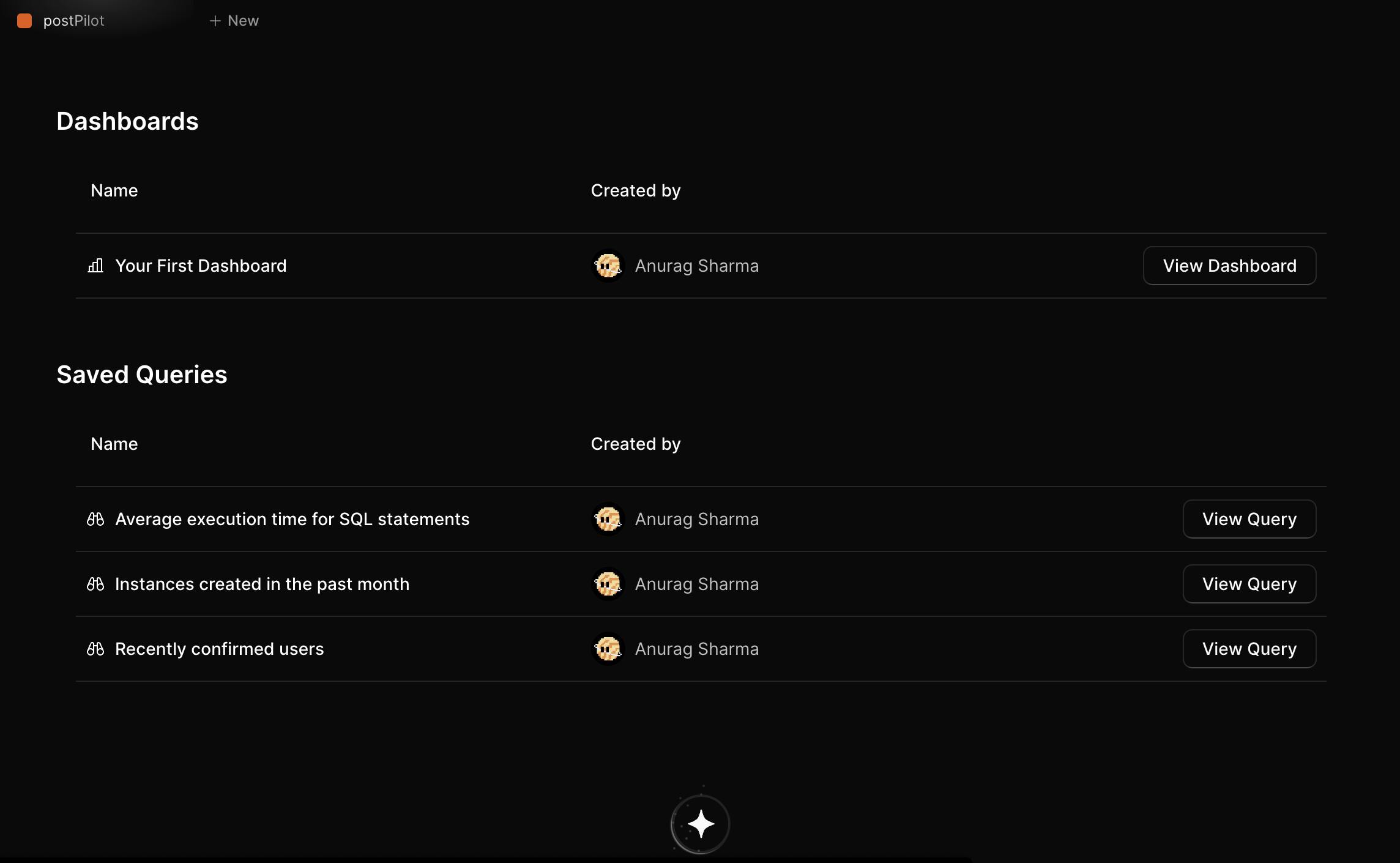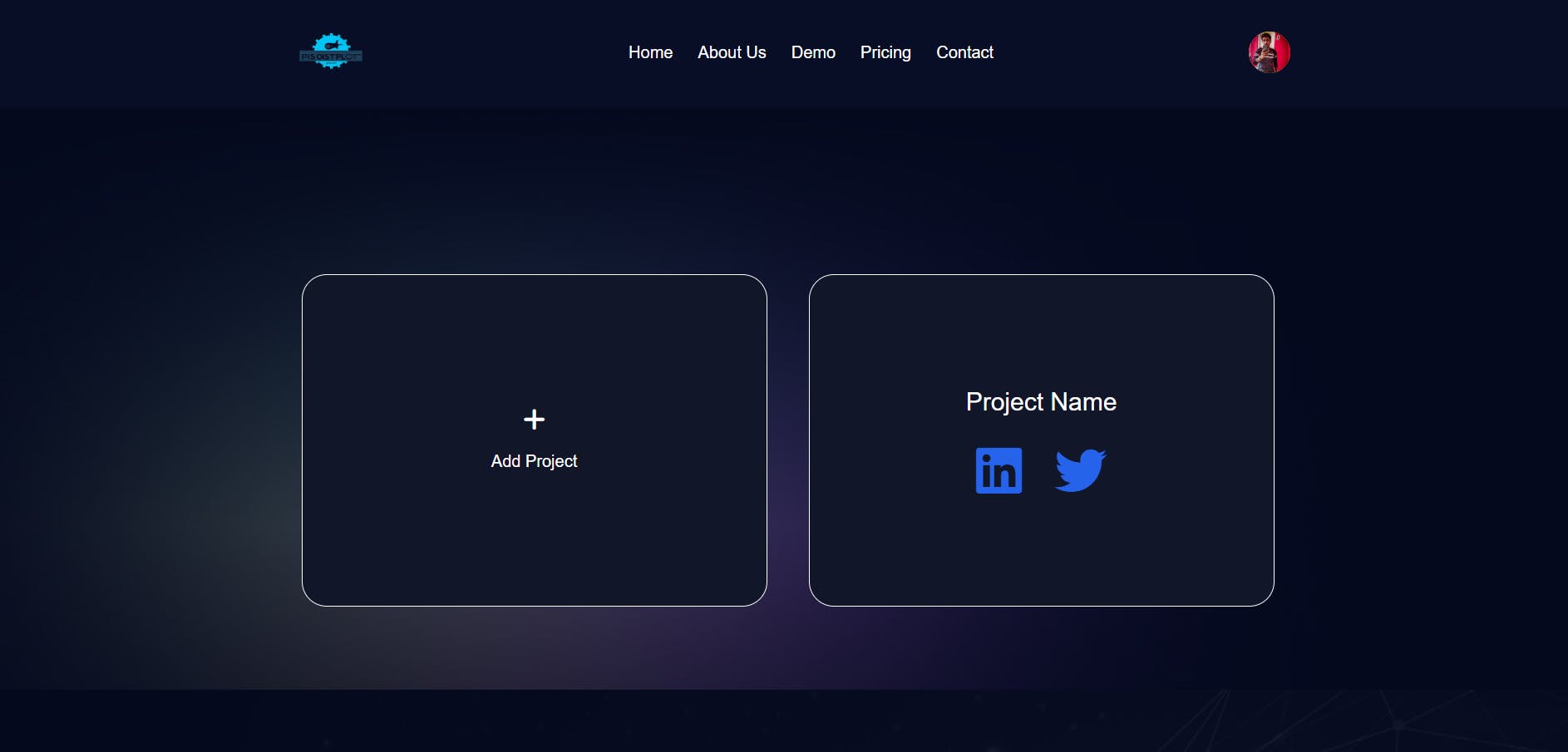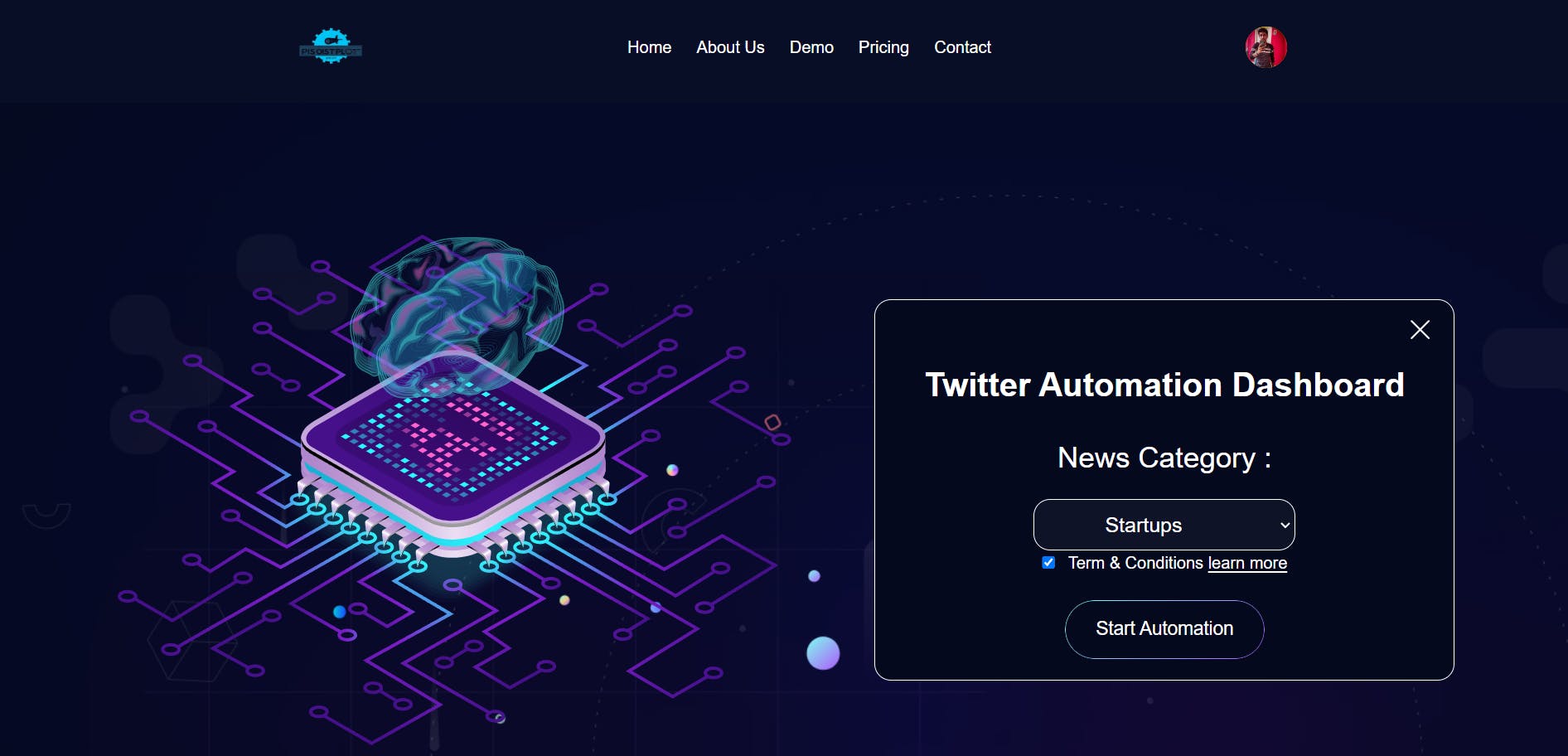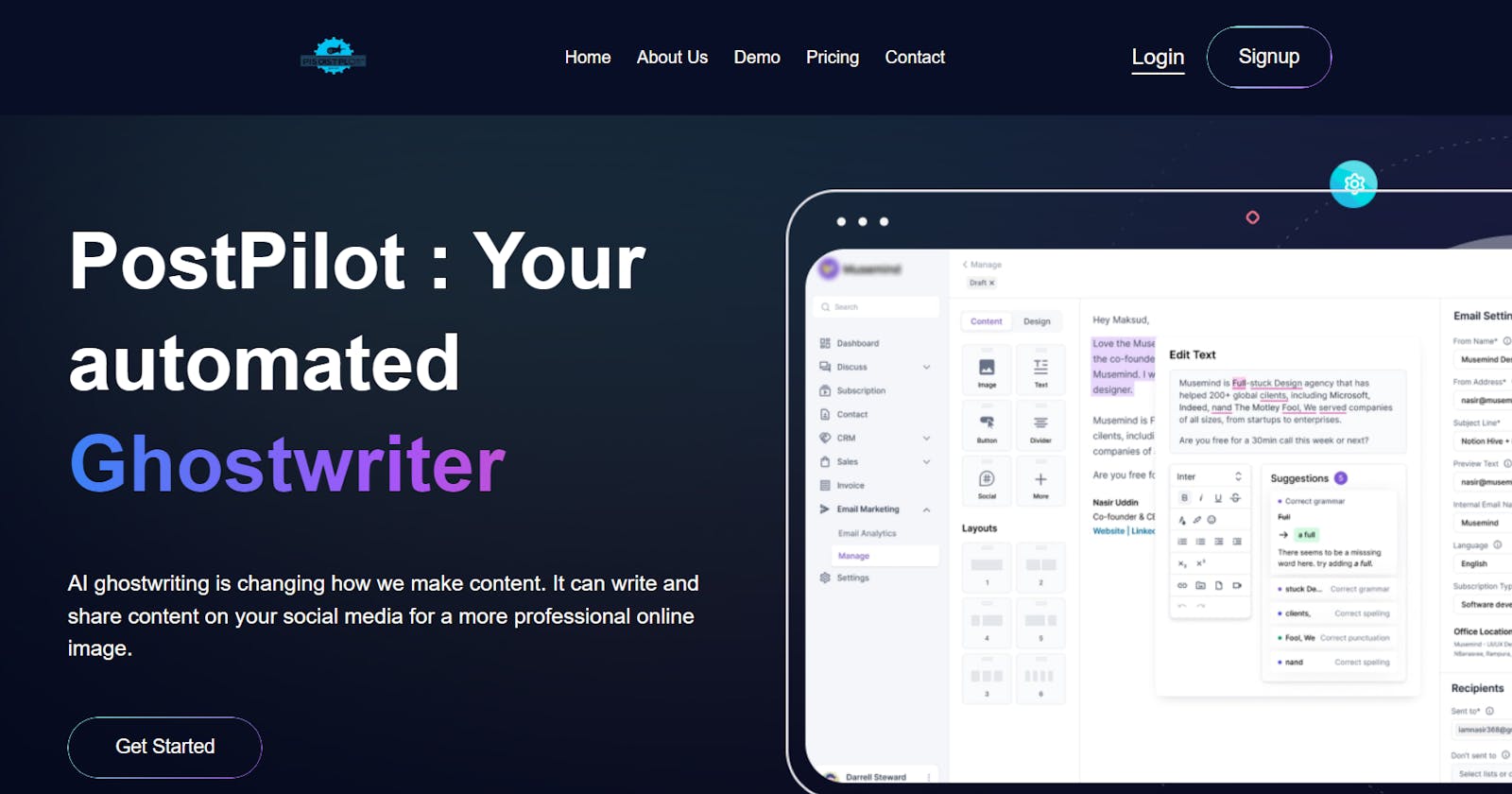PostPilot: Your AI Ghostwriter for Twitter & LinkedIn - Hashnode x Outerbase Hackathon Project
Boost profile reach, create professional tasks, provide different niches for posts, and secure authorization.
Introduction:
In today's digital age, establishing a strong presence on social media platforms like Twitter and LinkedIn has become essential for personal and professional growth. However, the hectic pace of modern life often makes it challenging to consistently create high-quality content. Hiring ghostwriters can be costly, and entrusting third parties with your social media credentials can be risky. To address these issues, we proudly present PostPilot, an innovative solution that streamlines content creation and posting on your behalf.
Why Tackle This Challenge?
Creating a strong personal brand on platforms like Twitter and LinkedIn is a common goal for many individuals. I set out to achieve this by committing to posting high-quality tech-related content regularly. However, as life's demands took over, it became challenging to keep up with this commitment. Balancing work, meetings, and client responsibilities left little time for maintaining a consistent online presence.
The idea of hiring a ghostwriter seemed like a solution, but it often led to miscommunication and neglect, ultimately causing my plans to fail. This experience inspired me to develop a solution—PostPilot. I recognized that countless individuals are facing the same struggle of maintaining an active and professional social media presence.
Tech Stack:
PostPilot leverages a robust tech stack to deliver its functionality:
FrontEnd: Developed using React.js and enhanced with Tailwind CSS and Recoil for a sleek and responsive user interface.
BackEnd: Powered by Outerbase, SuperBase, and PostgreSQL, ChatGpt to manage data efficiently.
Authorization: Implemented OAuth for secure user authentication, and Firebase Web for user management.
Mail Service: Utilizes NodeMailer and Email JS to send notifications and updates to users seamlessly.
The flow of our web app:
Here's how PostPilot works:
Landing Page: Users start their journey on our visually appealing landing page, which showcases the essence of PostPilot.
Log In/Sign Up: Users can either log in to their existing accounts or sign up for PostPilot's services.
Adding a Project: Users have the option to add a project, which currently includes Twitter and LinkedIn integration.
OAuth Authorization: Upon choosing a project, users are directed to an OAuth authorization page where they grant permission for our web app to post on their behalf on the selected platform.
Dashboard: After successful authorization, users land on our intuitive dashboard. Here, they can select their preferred post niche. Currently, we offer three niches: Technology, Funding, and Startups.
Content Generation: Our web scrapers gather data from news websites relevant to the chosen niche. This data is then sent to the CHATGPT API, which crafts a professional post. The finished post is published using the LinkedIn developer API.
Publication: Users can check their social media accounts to find that the professionally curated post has been successfully delivered.
Email Notifications: After each successful post, users receive email notifications to keep them informed and engaged.
We're continuously working on implementing Node-Cron automation to streamline this process, allowing PostPilot to replace the need for ghostwriters entirely. This enhancement will ensure that your social media posts are delivered consistently every day.
Demo:
For your convenience, we've prepared a comprehensive video demonstration to guide you through the setup and usage of PostPilot. With this tool, you can effortlessly automate your social media posting.
Outerbase Usage:
Our utilization of Outerbase played a crucial role in the development of PostPilot. We seamlessly integrated PostgreSQL as our database, connecting it to Superbase, and further bridged the connection to Outerbase. What truly stood out was Outerbase's intuitive graphical user interface (GUI) – it's a game-changer, especially for those accustomed to relational databases like MySQL and PostgreSQL.
Outerbase simplifies the process of connecting your backend to a database. With Outerbase, you gain access to a beautifully designed table UI that presents your data in an organized manner. This significantly streamlines the management of rows and columns, making your life as a developer much more convenient.
Beyond its user-friendly interface, Outerbase boasts a supportive community. During the hackathon, we encountered various challenges, and the Outerbase community was consistently available to assist us in resolving any issues we faced.

1>Authentication🔒:
For user authentication, we rely on Firebase. Firebase's robust authentication system ensures the security of our platform. Its efficiency is well-known in the development community, and we trust it to handle user authentication seamlessly.

2>Adding a Project➕:
In this section of our platform, users have the option to select one of two projects: Twitter or LinkedIn, as mentioned earlier. Upon making their choice, they are redirected to the authorization page, where they can grant our web app the necessary permissions to interact with their chosen social media platform.

3>Dashboard:
As previously mentioned, the dashboard is where users can select their preferred post niche. From this point onward, our AI and web scraper take over, handling everything seamlessly. All you need to do is sit back and enjoy the results as your posts are created and delivered effortlessly.

Challenges:
During the development of PostPilot, we encountered several significant challenges:
OAuth Authorization: Implementing a secure OAuth flow that allows users to authorize our application and obtain access and refresh tokens for their social media accounts.
Complex Backend Structure: Designing a robust backend infrastructure to handle the flow of data between various components.
Web Scraping: Developing web scraping scripts that trigger at scheduled intervals to extract data from news websites, ensuring a constant stream of fresh content.
ChatGPT Integration: Crafting effective prompts for ChatGPT to generate engaging post content based on the scraped data, a task that required careful consideration of various conditions.
Despite these hurdles, our team remained committed and worked tirelessly to overcome each challenge.
Future Fixes:
At PostPilot, we're committed to continuous improvement. Here's a glimpse of what's on our roadmap:
Automation Modules: We're actively working on integrating automation modules such as Node Cron and IFTTT to streamline and automate your posting process. Say goodbye to manual efforts!
Expanded Social Media Options: In our quest to make your life easier, we'll be adding more social media platforms to the list of options for automation. Your online presence will be everywhere you need it to be.
Diverse Post Niches: We understand the importance of variety. That's why we're expanding our range of post niches, so you can tailor your content to your audience's interests.
Revamped Plans: Your satisfaction matters to us. We're currently revising our plans to ensure you have the best options to choose from. Our goal is to provide you with plans that perfectly match your needs.
Stay tuned for these exciting enhancements as we continue to enhance your PostPilot experience.
Credits:
I want to extend my heartfelt gratitude to Hashnode and Outerbase for organizing this incredible hackathon and providing us with the platform to showcase our innovative ideas. Additionally, I'd like to express my appreciation to the dedicated team that worked tirelessly, even during
sleepless nights, to bring PostPilot to life.
My team-
Abir Dutta: Abir played a vital role in the implementation of the web scraper and the overall system architecture of PostPilot.
Anurag Sharma: Anurag was instrumental in implementing the OAuth authorization flow and integrating the database into PostPilot.
Nitin: Nitin deserves special mention for creating and designing the entire responsive user interface (UI) of PostPilot, ensuring a seamless user experience.
Code Repository-
We are committed to continually updating and improving PostPilot. If you're interested in exploring the codebase and contributing to our project, you can find the repository here: PostPilot GitHub Repository.
Summary:
In our fast-paced digital world, establishing a consistent and professional social media presence can be a challenge. The blog introduced PostPilot, an AI ghostwriter for Twitter and LinkedIn, designed to simplify content creation and posting securely. This innovative project was made possible through the Hashnode and Outerbase hackathon.
The blog expressed gratitude to both platforms for the opportunity and highlighted the dedicated team behind PostPilot: Abir Dutta, Anurag Sharma, and Nitin. Their combined efforts resulted in a powerful tool for individuals seeking an active online presence without the need for ghostwriters.
The journey with PostPilot continues, with ongoing improvements and a focus on automation. The team invites collaboration and contributions via their GitHub repository. PostPilot aims to make social media management easier and open new doors of success in the digital realm.
